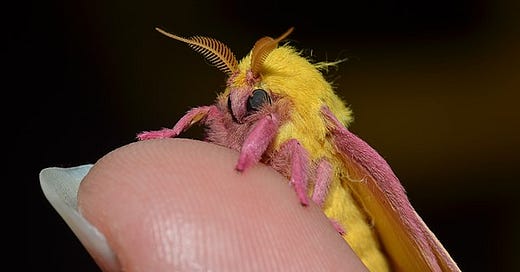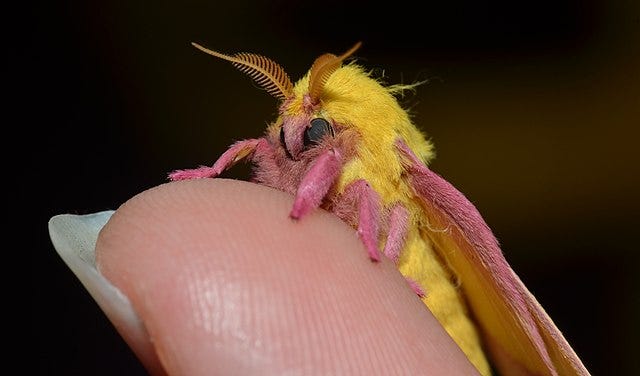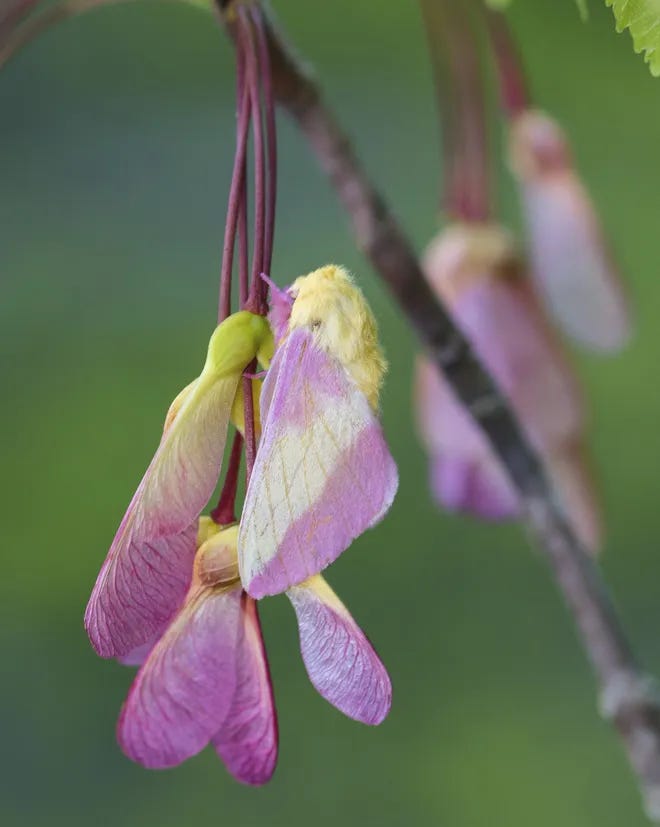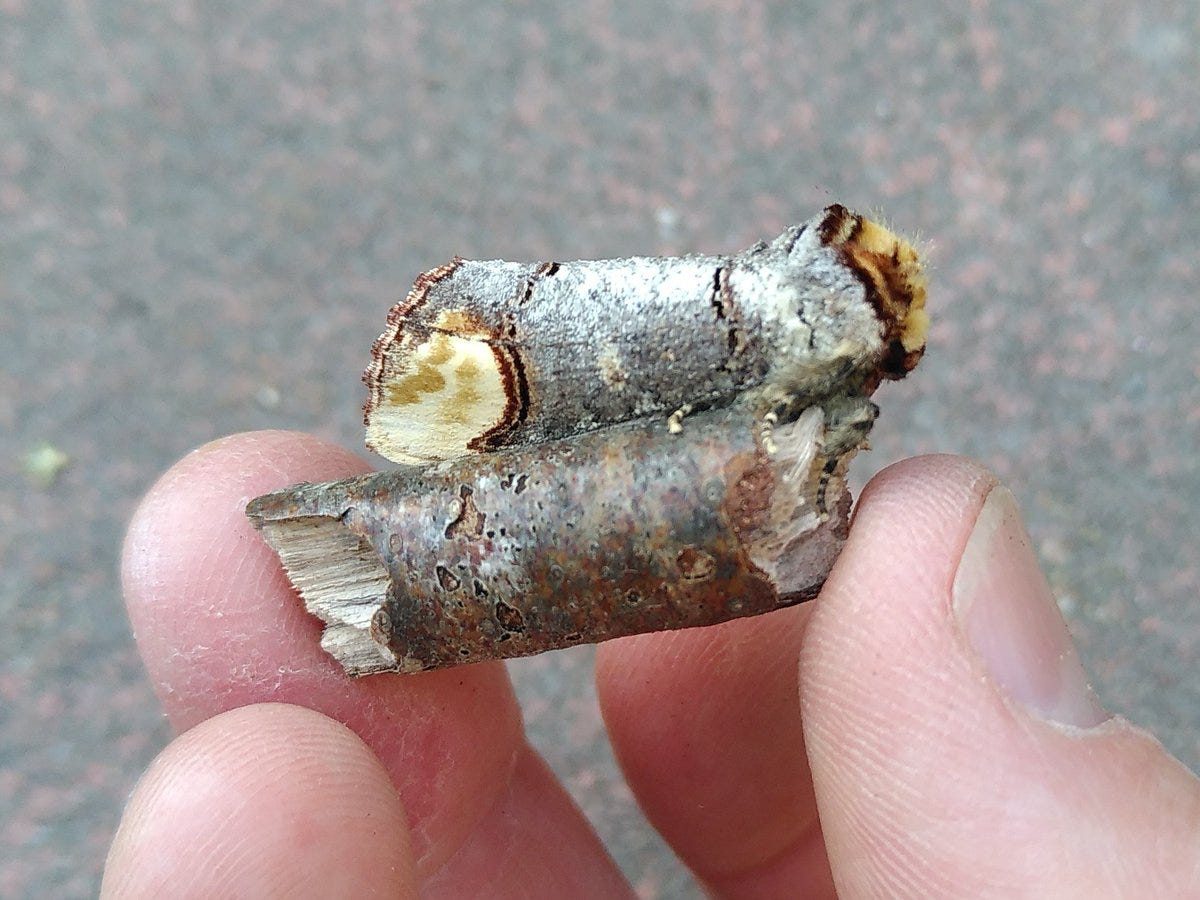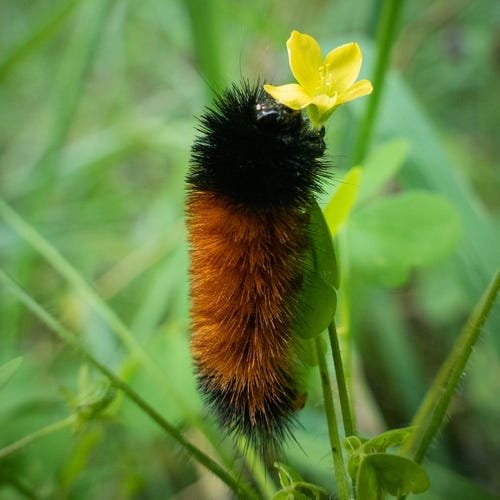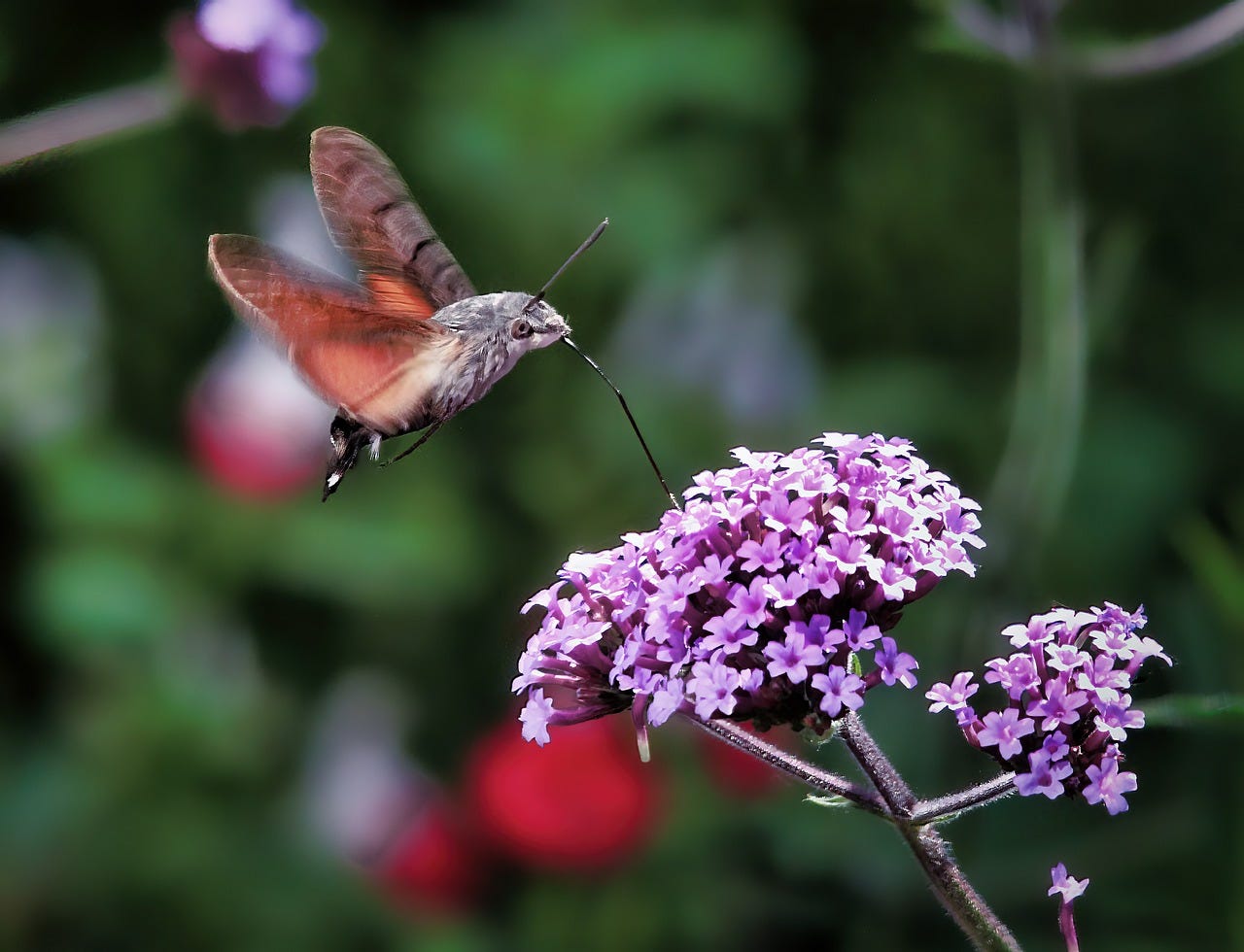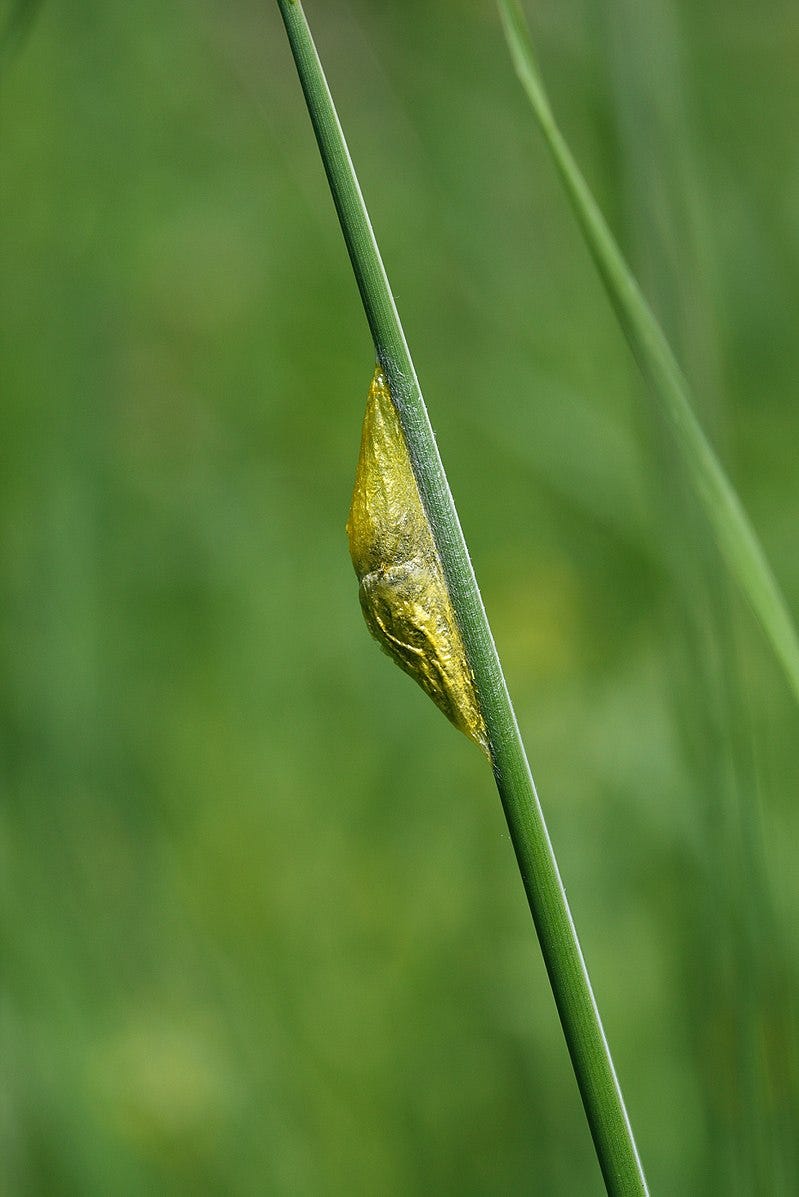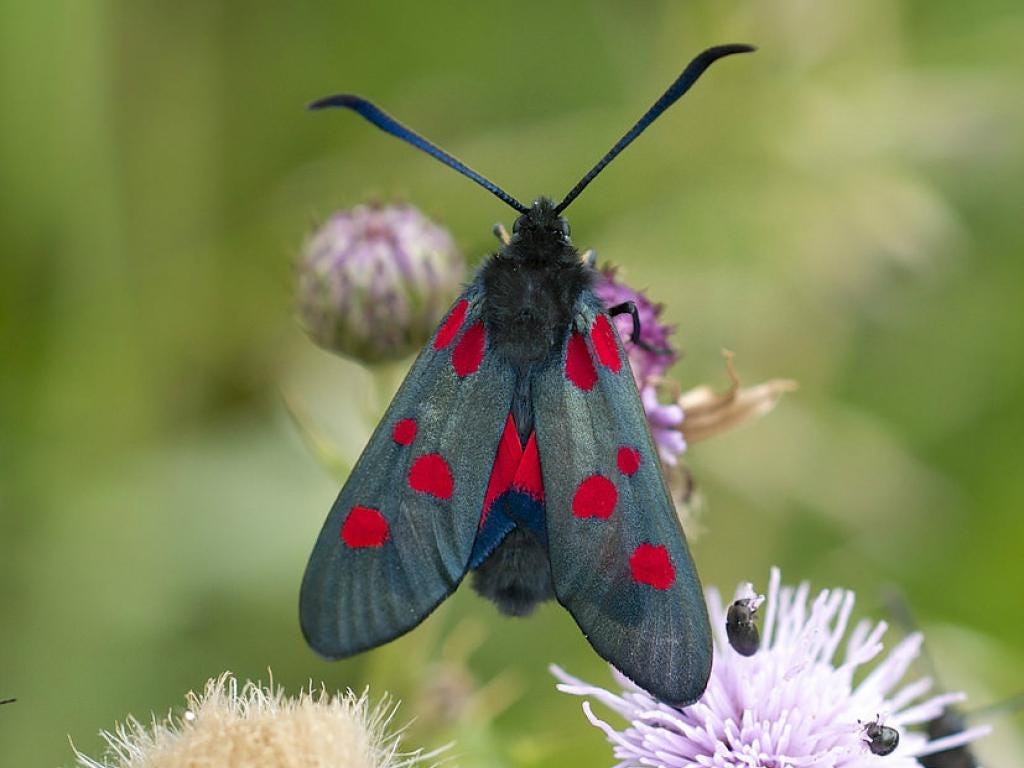Have you ever observed a workplace dynamic where the bulk of employees are quietly going about their work, accomplishing more than some of their flashier colleagues, all without acknowledgement? Well, I feel like moths are the similarly unsung stars of eco services, rather than the office. Popularly seen as annoying bugs that flutter around porch lights in the evening. With the small number that produce silk, hardly offsetting the majority that greedily eat holes in clothing. Moths are considered less interesting and dedicated than fluffy bumble bees and brilliantly coloured butterflies. When in reality, they are pollination wizards, with the undercover skills of a world-class spy ring. Out there kicking ass, undercover of darkness.
Pollination Ninjas
As it turns out, moths are more proficient pollinators than their bee counterparts. Its just been confirmed by a recent study at the University of Sussex. The reason that most of us don’t know this, is because they are often active at night. Diligently visiting a diverse range of plant material, all while we sleep.
In fact, they visit more flowers, over a greater distance than other pollinating counterparts. And, they don’t even do it on purpose. Unlike bees, moths don’t need pollen. They use petals and other flower parts as a landing pad, while they feed on nectar (although some species have such lengthy proboscis, that they can hover while they partake). It’s during this process that their furry bodies (thorax and chest) get inadvertently covered with an abundance of pollen and carry it from flower to flower, continually collecting and depositing more as they go.
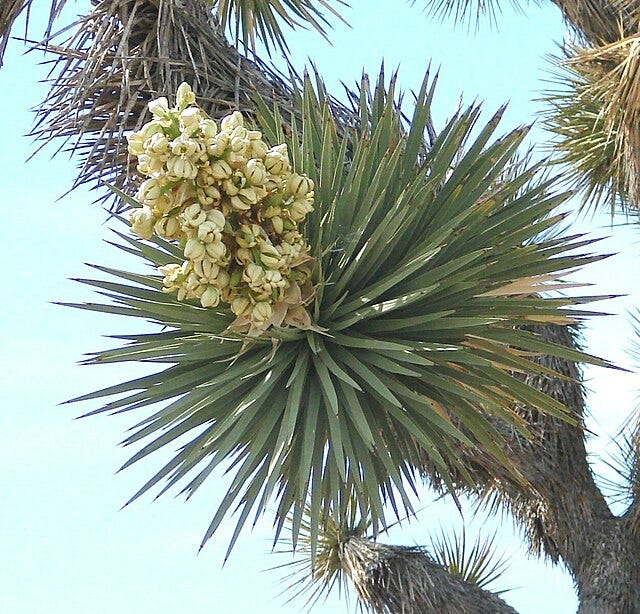

The blooms of the Joshua tree (Yucca jaegeriana) have coevolved with the Yucca moth (Tegeticula antithetica). The moth is the only pollinator of the tree, while the tree is the only host of the moth.
Eco-services & Camouflage Skills
Biological powerhouses; moths fill several eco-service niches that other genera can’t. They pollinate a wide variety of flowering plants at times when other insects aren’t active. Caterpillars feed on plant parts, helping to cycle nutrients into soil, and occasionally eat soft bodied insects including aphids. Plus, moths (at all stages of their lives) provide a significant food source for bats, amphibians and small rodents, all the way up the food chain to large mammals such as bears. Including perhaps most significantly, birds. Moths are a soft easily digestible source of protein for growing offspring. So much so, that as many as 96% of terrestrial birds utilize moths to raise their young. However, this is only if they can find them.
Because they are in such high demand, moths have evolved several survival techniques. The most intriguing of which many be their ability to hide in plain sight. They are unrivalled masters of camouflage.
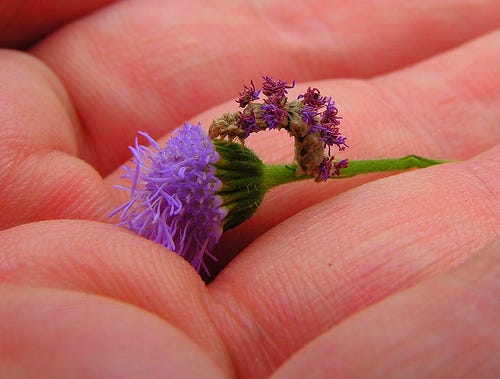

Wavy-lined emerald moth (Synchlora aerata) caterpillars have learned to ‘decorate’ themselves with tiny plant parts to blend in.
You may think that its pink and yellow colouring, would make a Rosy maple moth (Dryocampa rubicunda) stand out, until you see it next to the samara of a maple tree.
Which is a twig? and which a Buff-tip moth (Phalera bucephala)?
Research has shown that a Peppered moth caterpillar (Biston betularia) can sense the colour of a twig and match it perfectly.
Gardening for Moths
Now that we’re getting a more complete view of their role in our natural world, you may be asking yourself, do they need our help? Sadly, the answer is yes. Although most moths are generalists, and therefore can adapt to some environmental changes, many are still at risk. There’s no reason that we can’t help support them, along with bees, beetles, bats and butterflies by providing habitat services in our green spaces, and it’s easier than you might think.
It helps to start by doing a little research into what moths live in your area and what they look like at different stages of their lives. It’ll give you a better idea of who is in your local ecosystem and how you can support them.
Wooly bear caterpillars (Pyrrharctia isabella) are an easily identified species in southwestern Canada.
Join the Messy Gardener Revolution
many overwinter in leaf litter and dry grasses, so put off cleaning up green spaces. Try to limit your maintenance to areas where it’s needed for safety or are most visible to human eyes. Consider leaving snags, deadwood and brush in place when possible or using them as a sculptural element in your garden design, rather than disposing of them. Vertical breaks can also help by creating microclimates and offering pockets of protection from wind.
Naturalistic plantings, like these on the High Line, are full of all-season interest while providing habitat value.
Limit Light Pollution & Eliminate Garden Chemicals
Outdoor lights can distract moths from more important tasks, such as feeding, pollinating and mating. So try to turn them off when they aren’t needed.
Chemicals used to combat pests, kill weeds and fertilize soils can harm and even kill may moth species that are highly susceptible.
Cultivate Food Sources
Of the 160,000 moth species in the world, the majority are active from dusk until dawn. Seeking out evening and night flowering plants to feed on. Those that produce large amounts of nectar and hide it deep within their flowers, are white or light coloured (easily spotted at night) and have open or clustered blooms (for that landing pad effect) are the most attractive.
These include, but aren’t limited too:
tobacco (Nicotiana)
morning glory (Ipomoea)
jasmine (Jasminum)
buttercup (Ranunculus)
honeysuckle (Lonicera)
gardenia (Gardenia)
yucca (Yucca)
evening primrose (Oenothera biennis)
aster (Aster)
columbine (Aquilegia)
milkweed (Asclepias)
butterfly bush (Buddleja)
red valerian (Centranthus)
heather (Calluna)
madonna lily (Lilium candidum)
phlox (Phlox)
false indigo (Baptisia)
sunflower (Helianthus)
lupin (Lupinus)
salvia (Salvia)
vervain (Verbena hastata)
A Hummingbird hawk-moth (Macroglossum stellatarum) takes a sip from Verbena boneriensis, mid-flight.
Plant Hosts
Moths require plants for nesting and refuge for their young. Although these are sometimes the same plants that provide nectar, most species prefer woodier shrubs and grasses to nest in. Biodiversity is always encouraged.
cherry (Prunus)
willow (Salix)
raspberry (Rubus)
red twig dogwood (Cornus)
spirea (Spirea)
viburnum (Viburnum)
rose (Rosa)
grama grass (Bouteloua)
big bluestem (Andropogon)
switch grass (Panicum)
A 5 spotted Burnet moth (Zygaena lonicerae) incognito on a grass blade…and after emergence.
Cultivating a moth-friendly garden is a great way to share space with wildlife and reap a wide range benefits; acknowledging all that they do, even if it’s out of sight. So, get started today and don’t forget to let us know how it goes.
Sara-Jane at Virens Studio
We’re a Vancouver, Canada, based studio that specializes in naturalistic & ecological planting design, urban greening and garden writing. Get in touch today for consultation, garden plans and planting collaborations. And, don’t forget to follow us on instagram.

